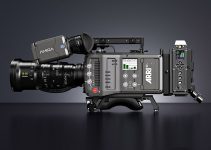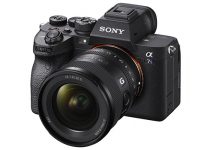The Dell XPS 15 9500 and the MacBook Pro 16 are two of the most powerful, most portable laptops that you can use for professional video editing. But which is the best of the best, and which is the better deal?
If you’re a Mac user, is it worth switching to Windows to save the extra dough? Or if you’re hungry for power, will this PC satisfy your craving? The spec-comparison rabbit hole can sometimes be a slippery slope, especially when you’re looking for a new editing system.
When you’re making a large purchase, it’s always best to get a second opinion and The Everyday Dad is back with his fatherly advice and breakdown to help you make an informed decision that will hopefully take you away from your cold, dark editing room, and bring you back into the light of day, on the couch.
There aren’t a lot of options when buying a MacBook Pro. You get to pick between 2 models, 4 different processor speeds, 3 graphics cards, and the rest is physical memory and storage. The MacBook is not upgradeable; the configuration is fixed at the point of sale.
Taking a quick glance at Dell’s shop, there are 5 different models of XPS laptops that are currently available, and a host of different configurations to pick from – including screen resolution. Most PC sellers make their systems fairly easy to upgrade.
Unfortunately, there is no fair way to simply compare these computers using exact, equal specs alone. We could get their configurations pretty close and show you a bunch of graphs but instead we’re going to look at the personal usability of the systems.
Here are the Key features for the base model configuration of but the XPS 15 9500, and the MacBook Pro 16.
Dell XPS 15 9500 (base model) Key Features
- 10th Generation Intel® Core™ i5-10300H
- 8GB DDR4-2933MHz, 2x4G
- 256GB M.2 PCIe NVMe Solid State Drive
- 15.6″ FHD+ (1920 x 1200) InfinityEdge
- Price $1,299.99 (base) – $2,749.99 (fully configured)
MacBook Pro 16 (base model) Key Features
- 2.6 GHz Intel Core i7 6-Core
- 16GB of 2666 MHz DDR4 RAM
- 512GB SSD
- 16″ 3072 x 1920 Retina Display
- AMD Radeon Pro 5300M GPU (4GB GDDR6)
- Price $2,399 (base) – $6,699 (fully configured)
Ports
- Dell = 2x Thunderbolt 3, 1x USB-C, SD Card Slot, 3.5mm headphone jack
- MBP16 = 4x Thunderbolt 3, 3.5mm headphone jack
Connectivity is important for any computer but nowadays it seems like we’re getting fewer and fewer ports on our laptops, and having to purchase additional dongles to make up for this lacking. This is absolutely true, but when you consider that the size of the internal memory is increasing, and the capacity of online storage is constantly expanding, there is no need for the average person to have 4 USB type A ports, ethernet or an SD card slot.
I will say, though, that I really miss the Kensington lock on my MBP and it’s great to see Dell has kept a lock in place. I’ve never understood why Apple removed it.
Regardless, carrying a dongle around isn’t that big of a deal and USB-C / Thunderbolt ports are currently pretty durable and offer a lot of speed and expandability.
Battery Life
You can expect a full day of regular use on both systems. If you’re doing heavy video editing, and graphics work you’ll need to plug them into a AC adapter or power bank.
It is interesting to note that the Dell XPS 15 has an optional 86Whr battery over their standard 56Whr hour. The battery in the MBP 16 is a 100Whr lithium-polymer battery – the largest they could include for you to bring on a plane when traveling.
Display
The base model XPS 15 9500 does not include an additional graphics card for image processing and has a resolution of 1920 x 1200. The base model MacBook Pro includes an AMD Radeon Pro 5300M graphics card, and has a 3072 x 1920 resolution.
With the included graphics card, the base MBP will work noticeable better than the XPS in applications like Premiere Pro, DaVinci Resolve, and After Effects. You can upgrade the XPS to an NVIDIA® GeForce® GTX 1650 card for greater video editing performance.
Keyboard
A lot of people really hated Apple’s butterfly keyboard and Apple took a lot of heat over the not-so-great keyboard design. Personally, I never noticed an issue with the butterfly keyboard but people really didn’t like it.
They’ve updated the problem, and I believe typing on the MBP 16 (which is what I’m doing right now) is great. Apparently, the XPS 15 9500’s keys are a little springy and plasticky according to TED. They aren’t terrible but you can feel the difference in quality; however, he believes both offer a fantastic typing experience.
Upgradability
The XPS 15 9500 is easily upgradeable, offering an internal NVMe raid and physical memory up to 64GB. The MBP is not upgradeable after purchase.
Transportability
Probably the most notable feature of the XPS 15 9500 is its size. Though it is a 15″ laptop it is very diminutive and feels a bit more like a 13″ laptop thanks to the nearly bezel-free display and Dell’s great engineering team.
The MacBook Pro 16 is noticeably bigger and is harder to fit in a laptop bag when you’re on the go.
However, the MBP is configurable with an internal SSD up to 8TB which means that you could take it on the go and not have to plug any drives into it whatsoever to edit a project. It might be a little bigger, but you’re bringing less in general.
Integration
From small offices to large server rooms, the world runs on Windows. There are more Windows users than there are Mac users and there always will be more applications available for Windows than there are for Mac. This is an indisputable fact.
However, most people carry an iPhone, Apple Watch, or iPad making the MBP better as a personally integrated device. For me, I send files between all of my Apple devices without any issues. In addition to that, I can emulate Windows on my MBP when needed, which isn’t really all that often.
Conclusion
Both the Dell XPS 15 9500 and the MacBook Pro 16 are fantastic computers and we’re all lucky to have so many choices these days. There is no way to not approach this comparison without some bias; if you’re already a PC user or a Mac user, you are already decided.
And even beyond that, these two systems are pretty evenly matched. So this is my fatherly advice and it’s mostly about restaurants but I think it works here too, If there are a lot of items on the menu, the kitchen isn’t going to be very clean.
Apple only makes 2 lines of notebooks, the pro and the air. Dell makes the Latitude, Vostro, Inpiron, and Precision Mobile series laptops too. There are a lot of things on the menu with Dell, and they don’t focus as much attention to making one system to represent their brand like Apple does.
Ultimately, it comes down to what ecosystem you live in: PC or Mac. With a lower cost of entry, the Dell is a safe bet for light use. If you’re looking for something high end but also need Windows, keep in mind you can run Windows on a Mac too.
[source: The Everyday Dad]
Order Links:
16-inch Apple MacBook Pro (B&H, Amazon)
Dell XPS 15 laptop 15.6″ (Amazon)
Disclaimer: As an Amazon Associate partner and participant in B&H and Adorama Affiliate programmes, we earn a small comission from each purchase made through the affiliate links listed above at no additional cost to you.



